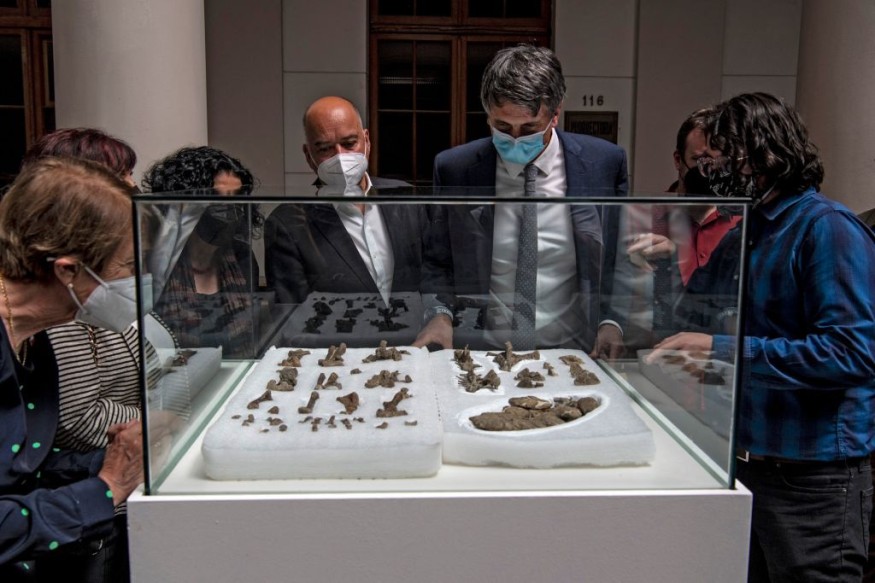
A truly innovative type of dinosaur with forearms that will make the Tyrannosaurus rex appear as Popeye in comparison, was reportedly discovered by evolutionary biologists in Argentina.
The Newly Discovered 'Armless' Dinosaur
The dinosaur, dubbed Guemesia ochoai as well as determined from a solitary cranium, is considered to be a member of the abelisaurids, a family of relatively small apex predators that previously roamed Africa, Europe, India, and Latin America prior to actually becoming endangered species approximately 66 million years ago.
Guemesia ochoai's skull which is also about 70 million years old is the last specimen of its type in the world discovered in northwest Argentina. Its braincase is unusually small in comparison to other abelisaurids.
In addition, it's among the smallest-brained abelisaurids ever discovered, 70% the proportion of the famed Carnotaurus species, that also managed to reside at South America's southernmost tip and was previously highlighted in Jurassic World.
If the limbs of the freshly found creature were anything like those of its Western pacific ancestors, they might well have performed poorly futilely across its large torso. Abelisaurids couldn't flex their upper limbs, much everyone else hold something among both their fingertips, because they lacked ossified wrist joints and movable flexion or extension and the said species even lacked rudimentary claws.
Science Daily warned the public and other experts to not be fooled by it as despite the fact that the Northern Hemisphere's T. rex limbs were broader and much more formidable, Abelisaurids could still drag off the wild animals considerably bigger than themselves. Their powerful mouths and blade-like fangs efficiently compensated for their short forearms.
With only a cranium, it's difficult to determine anything whatsoever concerning G. ochoai was compared toward other abelisaurids, but a media report from the Natural History Museum of the United Kingdom connects it to Carnotaurus sastrei, seen beneath, but with a relatively small skull and therefore no spikes.
According to evolutionary biologist Anjali Goswami of the National Museum of Scotland in the United Kingdom in her interview with Science Alert, the mysterious creature is rather odd for its sort.
Furthermore, it demonstrates that the creatures that lived in this location were significantly separate and distinct from those that lived in plenty of other regions of Argentina, confirming the concept of multiple regions in South America's Cretaceous."
New Species Found By Paleontologists In Argentina
The study backs up other latest findings that Abelisaurids were more diversified in South America than previously supposed. It appears that abelisaurids were equipped to make adjustments to distinct confined environments when the southern supercontinent, Gondwana, commenced to divided off.
It's still unknown why they acquired such little limbs. Analysts believe these are fossilized appendages, or worthless remains from predecessors who profited from their existence in the past.
Almost majority of the abelisaurid specimens discovered in Argentina thus far have come from Patagonia, and they possess numerous morphological features, particularly absurdly short limbs. The earliest to be discovered in the northwest, has distinct characteristics that may imply life in a tropical temperature.
Its cranium, for example, had a pattern of tiny pores that could have permitted the dinosaur to calm itself apart by increasing the blood flow to the top layer of the epidermis and expelling high temperatures. A component like this might be less beneficial even farther south.
The scientists explain that all throughout the Late Cretaceous, South America was split into northeastern and southwestern kingdoms by a marine barrier that worked as a filtration system for certain species.
"The substantial morphological distinctions displayed by Guemesia in comparison to other abelisaurids may represent more evidence of the species composition uniqueness of northern Argentina all through the end Cretaceous," experts further discussed.
Argentina is comparatively undiscovered in comparison toward other fossil-rich regions around the earth, therefore this is unlikely to be the final abelisaurid form of life discovered.
© 2025 NatureWorldNews.com All rights reserved. Do not reproduce without permission.





